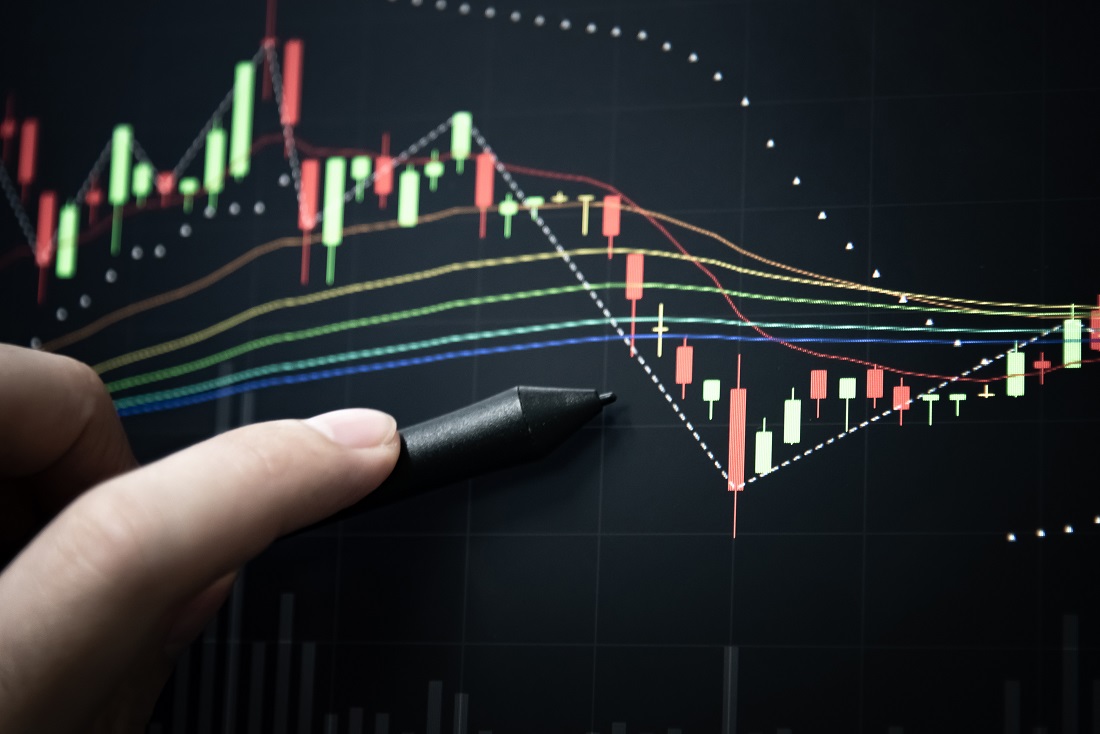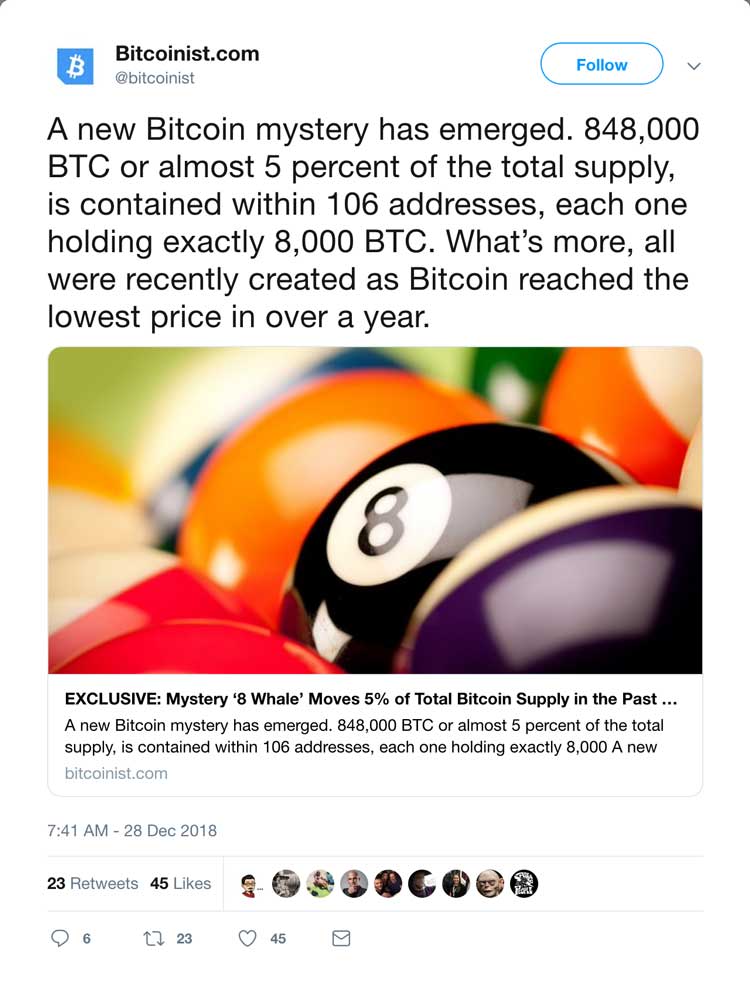2023-5-25 07:00 |
There are many ways to decipher market trends. From technical and fundamental analysis to social media monitoring, many metrics provide a foundation from which traders use to gauge market sentiment—and time trades.
Technical analysis can become pretty complex. Fundamental analysis requires a significant amount of time to conduct the proper research.
But—there’s a bit of a shortcut out there.
Crypto derivatives can serve as a proxy for the market’s overall sentiment. They can show where traders think the market is moving next, providing traders with valuable clues to consider.
So, what exactly are derivatives in crypto, and how can traders take advantage of them? Let’s find out.
What are crypto derivatives?Whether one is trading in stocks or cryptocurrencies, derivatives represent another, more complex level of trading. At the basic level, there’s spot trading which everyone is familiar with.
In spot trading, you can buy an asset and immediately take ownership, such as buying BTC on Binance. Down the line, you can then sell BTC when its price goes up, netting yourself a nice profit from the trade from that buy-sell price difference.
Leveling up from such spot trading, we have derivatives trading. This type of trading doesn’t involve direct ownership of an asset. Instead, derivatives trading is all about the contracts placed on the asset’s price. These contracts are called derivatives because they derive their value based on the underlying asset.
Therefore, traders can still make profits from the asset’s price differences without ever having to own the asset itself.
Types of derivative contractsDepending on the nature of the contract, there are three main types of derivatives. Each derivatives contract has its own purpose in trading.
Futures contractsThese derivatives contracts allow traders to buy or sell an asset at some date in the future. By doing this, traders place bets on the asset’s future price, locking themselves in on the outcome of the bet.
Let’s say the current BTC price is $30,000, but trader Mark is very optimistic about Bitcoin’s future price, making Mark bullish. He thinks BTC will go up to $40,000. Based on this optimism, Mark places a futures contract to buy Bitcoin at $35,000, with an expiration date of one month.
If Bitcoin goes to $40,000 at the end of the month, Mark can buy Bitcoin at the previously set price of $35,000 and then sell it for $40,000. He would then realize a profit of $5,000 per BTC.
On the other hand, if Mark’s bet falls short, he will take a big loss. If, at the end of the month, Bitcoin goes to $25,000, Mark would still be contractually obligated to buy BTC at the same set strike price of $35,0000.
But, because the price went down instead of up as expected, he would be in for a loss of $10,000 per BTC.
Perpetual futures and funding ratesAs the name implies, this type of derivatives contract is a tweak on futures. The betting on the asset’s price, at some time in the future, is the same. Except, perpetual futures lack an expiration date. This enables traders to hold onto their bets until they decide to close the contract.
Are perpetual futures better than traditional futures? To answer that, let’s picture the same situation with trader Mark. He retains the same bullish attitude, believing BTC will go up from the present $30,000 to $35,000. This time, however, he would place a perpetual futures contract.
Mark would not be contractually obligated to buy or sell Bitcoin at a specific point, whether the BTC price goes up or down. Instead, he can hold the position for as long as he wants. Or at least, for as long as Mark would have sufficient margin to maintain the position.
This is where the perpetual futures funding rate comes into play. Like a bullish Mark, betting BTC will go up. There is a bearish Bob, betting BTC will go down. There is a funding rate between them, representing buyers and sellers of perpetual futures.
The funding rate is a payment periodically exchanged between Mark and Bob. This way, the balance between the long (buy) and short (sell) positions is maintained. Otherwise, it wouldn’t be possible to maintain a perpetual futures contract, regardless of the price move of the underlying asset.
Trading platforms list funding rates on perpetual futures in advance. For example, if the funding rate is at 0.05% per day, and BTC goes above $30,000, Mark will receive funding payments from Bob, who placed the bet in the opposite direction – shorting Bitcoin. Likewise, Mark will fund Bob’s short position if Mark’s optimistic outlook falls short.
But, if there are too many long traders, the funding rate turns positive, so they will have to pay a fee to shorters. And vice-versa if there are too many shorts. This mechanism is critical to maintaining the value of perpetual futures contracts so it doesn’t go under the asset’s spot price.
For this reason, perpetual futures contracts are largely in sync with an underlying asset, which makes it easier for traders to hedge their positions and manage risk better. On the other hand, when combined with market volatility and funding payments, perpetual futures could eat away traders’ profits over time.
OptionsSuppose you’ve been paying attention so far. In that case, you may have noticed that futures contracts revolve around obligations to buy or sell, with perpetual futures as a way to hold off such obligations until the moment is right continually.
Options are derivatives contracts that move away from obligations into the right to buy or sell an asset at some point in the future. Based on this intent, there are two types of options:
Call options – the trader can buy an asset at a set price. Put options – the trader can sell an asset at a set price.In both cases, the trader would have a right, without obligation, to exit their position at a set price – strike price – at a set expiration date. These criteria are established and enforced by regulated options brokers in an automated manner.
So, how would this be different from previous examples?
Let’s say trader Mark is interested in trading options this time. His outlook is the same. BTC will go up from the present $30,000 to $35,000. Bullish as he is, Mark would then buy a call option, holding a premium of $1,000 and an expiration date of one month.
If Bitcoin goes above the strike price of $35,000 in that one month, Mark could exercise his option to buy Bitcoin at the strike price of $35,000. He would then be able to sell the options contract at the higher market price to make a profit.
If the opposite happens—Bitcoin goes under the strike price—Mark would just let the contract expire, but he would lose the $1,000 premium. The same dynamic applies to put options but in the opposite direction.
Notice that options trading allows traders to generate income by selling ‘premiums’ in options contracts. After all, they receive a premium upfront from the buyer—like a fee—and they get to keep it regardless of the option being exercised.
But this can work both ways. For example, if Mark would exercise the option when Bitcoin goes above the strike price, the other trader would be obligated to sell Bitcoin at the lower strike price. In such a scenario, the trader’s profits opposite to Mark would be limited by their premium. At the same time, their loss would be unlimited if Bitcoin’s price kept increasing.
Yes, options are about rights instead of obligations. However, the options-selling party creates an obligation if the buyer exercises the option.
Benefits of derivatives to tradersWith clarification of derivatives contracts out of the way, you may have already concluded how they benefit traders. Let’s make it even more clear. Why would traders tap into derivatives trading instead of simple spot trading?
Risk management: HedgingIn finance, those who do not hedge lose in the long run. For every position, there is a counter-position to offset the risk of the original position. This is the essence of hedging. How exactly would that apply to derivatives?
Consider a scenario where Mark bought 10 BTC at a cost-basis of $30,000 each. But Mark worries that some macro news will decrease the BTC price in the next few months. Yet, Mark doesn’t want to sell his bitcoins either because he thinks the price will only go up in the long run.
Considering this, Mark would buy a put option, allowing him to sell 10 BTC at a strike price of $25,000, with an expiration date three months from now. He would pay the $1,000 premium for this option.
Therefore, if Bitcoin stays above the $25,000 strike price, he wouldn’t exercise the option but would lose the $1,000 premium.
Yet, if worse comes to shove, and Bitcoin goes below the $25,000 strike price, Mark could then exercise his option and sell 10 BTC at a higher price. For instance, if Bitcoin goes to $20,000 before the end of three months, Mark would be in for a $100,000 unrealized loss ($300,000 – $200,000) regarding his BTC holding.
Yet, with the put option in his hedging belt, Mark could exercise the option at $25,000, gaining him a $250,000 – $1,000 premium. This would net him a total profit of $249,000, much better than the $200,000 without the option.
SpeculationWhether one likes them or not, memecoins like DOGE and PEPE have certainly demonstrated that speculation can be massively profitable, even for mere spot trading. But speculation can be brought to another level with futures contracts.
As explored in Mark’s example of futures trading, traders supply both long and short contracts. With this liquidity created, their bets in the form of contracts become as valuable as the underlying asset itself.
In turn, speculators push price discovery into the market while also providing profit-taking opportunities. When combined with fundamental analysis, such speculation becomes more reliable than sports gambling.
LeverageSpeculation and leverage go hand-in-hand with futures trading as well. Futures derivatives are most suited for leverage because these contracts have set expiration dates. In this sense, leverage is all about amplifying bets.
In the previous example with Mark, if he believes Bitcoin will go up from $30,000 to $35,000, he could use leverage to increase potential gains. For example, such futures contracts could be leveraged by 10x:
Mark would buy 10 Bitcoin futures contracts valued at $300,000 (10 futures contracts x $30,000). At 10x leverage, he would have to put up $30,000 upfront as margin, with the rest $270,000 borrowed from the trading platform. If Bitcoin exceeds $35,000, Mark will profit $50,000 thanks to the 10x leverage (10 futures contracts x $5,000 increase per contract).Of course, if the bet doesn’t pan out, the $50,000 profit would turn into an equal loss, amplified by 10x leverage. Some crypto trading platforms offer massive leverage amplification, going as much as 125x or more.
Leveraged trading is exceedingly enticing for traders with a small amount of capital. However, one should take this path with extreme caution. It would be best to prepare if all money is lost psychologically. This way, you can segregate your funds accordingly. Trading with leveraged positions is extremely dangerous.
Derivatives and market sentimentIf you understand futures trading, you can already guess the answer here.
There can be too many long or short positions in perpetual futures trading. The funding rate can turn positive (longs) or negative (shorts).
To put it differently, the bets on the price of BTC rising can either dominate—or be lacking. Conversely, this unveils market sentiment.
In technical terms, when futures contracts are valued above the asset’s spot price, this is called ‘contango’. In the opposite direction, if futures contracts are under Bitcoin’s price, the trend is ‘backwardation’.
Therefore, contango is bullish, while backwardation is bearish market sentiment. On platforms like Glassnode, the former is represented as an upward-sloping curve, while the latter is represented as a downward-sloping curve.
Taking advantage of this market sentiment, traders can then deploy some of the strategies we have learned. For instance, as the spread between Bitcoin’s spot price and the futures price goes upwards – contango – they could deploy shorts in futures trading. At the same time, they could go long in spot trading.
This would constitute a combination of hedging and speculating.
By the same token, traders could engage in options trading when there is backwardation. By placing ‘call backspreads,’ they could buy a call option with the strike price just slightly above the spot price – a higher strike. Simultaneously, they could sell two call options significantly over the strike price – a lower strike.
The first call option will be cheap in the bearish backwardation sentiment, while potential losses can be limited with the two lower strike call options. Therefore, if the trend follows, traders can profit from buying the first option and selling the cheaper, lower strike options.
AI could relieve derivatives complexityIt’s quite clear how derivatives trading is complex. At least more complex than spot trading, with the potential to get more intricate depending on the trader’s mental stamina.
At a fundamental level, derivatives trading is all about taking into account multiple factors in real-time to place solid bets. In other words, it’s pattern oriented. And what better tool to discern patterns than machine learning and artificial intelligence (AI)?
We’ve already seen AI in image generation, various forms of marketing, coding, diagnosis, summaries, etc. Undoubtedly, we will see AI enter derivatives trading as well, where bots manage risk by shifting trading strategies on the fly. In such a near future, where AI even reads news articles to sense trends, the market will likely consist of bots trading against bots.
However, that doesn’t mean that human intervention through intuition will not be valuable. If anything, upcoming AI systems will provide insightful feedback on why they committed to certain positions at certain points.
Regardless of the potential benefit AI can bring to derivatives trading; human traders still need to understand the basics.
Shane Neagle is the EIC of The Tokenist. Check out The Tokenist’s free newsletter, Five Minute Finance, for weekly analysis of the biggest trends in finance and technology.
The post How crypto derivatives boost trading strategies and provide insight into market sentiment appeared first on CryptoSlate.
origin »Market.space (MASP) íà Currencies.ru
|
|




















